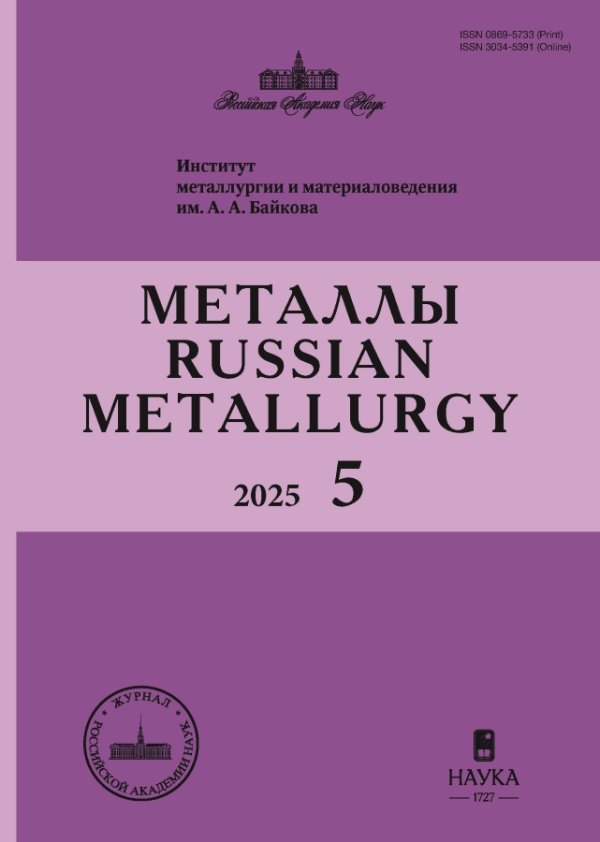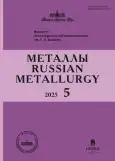Russian Metallurgy
Media registration certificate: № 0110135 от 04.02.1993
The journal publishes results of original experimental and theoretical research in the form of reviews and regular articles devoted to topical problems of metallurgy, physical metallurgy, and treatment of ferrous, nonferrous, rare, and other metals and alloys, intermetallic compounds, and metallic composite materials.
The journal was founded in 1959.
最新一期
编号 5 (2025)
Articles
STUDY OF THE INFLUENCE OF THERMAL EFFECT ON THE STRUCTURE OF THE AlNiCoFeCr AND AlNiCoFeCrCu HEAT ELECTRICITY PRODUCED BY ARC MELTING
摘要
 5–16
5–16


THE STRUCTURE OF THE Al70Cu30 ALLOY AFTER CRYSTALLIZATION FROM THE LIQUID PHASE AT EXTREME PRESSURES
摘要
 17–25
17–25


INVESTIGATION OF THE INFLUENCE OF SELECTIVE LASER MELTING PARAMETRES ON THE STRUCTURE AND MECHANICAL PROPERTIES OF Al-Ce-Fe-Ni-Zr ALLOY
摘要
 26–32
26–32


STUDY OF THE COMPOSITION AND PROPERTIES OF VT6 ALLOY GRANULES OBTAINED BY CENTRIFUGAL PLASMA SPRAYING
摘要
 33–42
33–42


ASPECTS OF CARBON DIOXIDE CORROSION IN MODERN PIPE STEELS
摘要
 43-51
43-51


EFFECT OF LOW MANGANESE AND PHOSPHORUS CONTENTS ON THE BULK AND SURFACE PROPERTIES OF IRON MELTS
摘要
 52-60
52-60


Inconel 625/(WC, W2C) COMPOSITE COATINGS SYNTHESIZED BY LASER CLADDING
摘要
 61-69
61-69


EXPERIENCE IN OBTAINING AND USING SHS LIGATURES BASED ON CHROMIUM NITRIDES FOR SMELTING STAINLESS STEEL
摘要
 70-77
70-77


PRODUCTION OF W-Y2O3 POWDERS WITH SPHERICAL PARTICLES AND SUBMICRON INTERNAL STRUCTURE USING ELECTRIC ARC THERMAL PLASMA
摘要
 78-90
78-90


INTERACTION OF LIQUID SLAG CaO-Al2O3-SiO2-MgO WITH THE Al2O3-BASED REFRACTORY CERAMICS
摘要
 91-98
91-98












